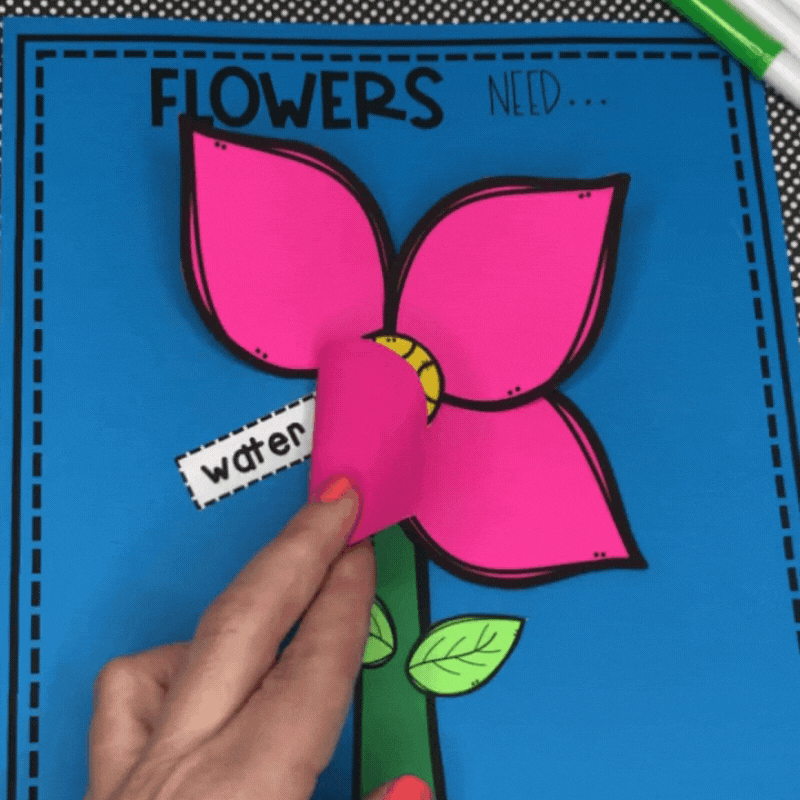Plant Life Cycle Craft and Activities for Kids
Even if your experience with plants has been difficult in the past, you don’t need to have a green thumb to have fun teaching about the life cycle and parts of a plant with these engaging science activities for kindergarten and first grade. With these activities, students will:
identify and understand the function of the parts of a plant
sequence the life cycle of a plant
identify the needs of plants
Identify Parts of a Plant
Students may already be familiar with some parts of a plant, such as flowers and leaves. What they may not be familiar with is the function of each part of a plant.
Parts of a Plant Anchor Charts
We can teach about unfamiliar parts of the plant and their functions by observing plants and creating an anchor chart to show new learning. Students can use the interactive notebook pages to illustrate what they learn about plants.
Parts of a Plant Activities
Once students are familiar with the names of each plant part, they can apply their learning with a plant observation activity. Take your students outside, or bring in a variety of indoor plants for students to observe and compare different parts of plants. As students look at the plants, they will draw and label each part that they observe.
Comparing Plant Parts Discussion Questions:
How is a flower stem and a tree trunk similar?
Do flowers and trees get food in the same ways?
Can you label the important parts of grass?
Once students are confident observing and naming the parts of a plant, they can also learn how each part functions for the growth of the plant.
I love incorporating songs with science because it helps make learning scientific terms fun and easy to remember.
Plant Life Cycle Activities
What better way to observe the life cycle of a plant than to plant your own seeds. With this hands-on activity, students will get to develop responsibility by taking care of their plant and making sure it has everything it needs.
Not sure what to plant? No problem! Some plants that I’ve found to grow quickly are grass, radishes, Lima beans, and Cosmo flowers.
Plant Journal
Students can document the plant life cycle using a plant journal. Every few days, students will draw and label the changes that they see in their growing plant. Your students will love digging into the soil and exploring with their green thumbs.
Plant Needs Activities
By now, your little gardeners are familiar with some of the things that their plant needs to grow. Create a diagram of your class plants and label the needs.
If you’re interested in a little experiment, observe what happens to a plant if one of its needs aren’t being met.
Plant Needs Experiment
Get 2 of the same plant and label them.
Give one plant enough air, water and sunlight.
Choose one need to eliminate from the other plant.
Observe and compare how the plants grow.
Plant Needs Craft
Wrap up the unit with a fun plant needs craft where students will label a flower with the correct plant needs. The craft is perfect to hang on your bulletin board all spring.
Wrap-Up
With these hands-on activities, your students will learn life skills they can take to use when they have a garden of their own.
Learn about the needs of plants by planting some seeds and watching them grow with a plant journal.
Study and compare the life cycle of different plants.
Want to try this later? Save these Plant Life Cycle Activities to your favorite Pinterest board.
You’ll love these related posts













